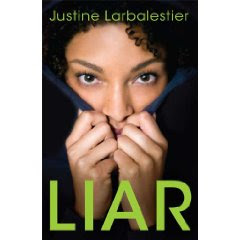To have your name entered for a chance to win copies of the books, just post a comment on one of the posts mentioning the giveaway.
Today, I'll be sharing my review of The Nutcracker and the Mouse King. This new picturebook shares the original words of E.T.A. Hoffmann's original story with new illustrations painted by Gail de Marcken. She used watercolors and ink for the details to create the elaborate and historical illustrations:
I was particularly fond of the endpages, which show a town quite possibly built of candy. That's the kind of page I would have stared at for oh, 20 minutes as a kid, trying to decide what it would be like to live in the town and which building/road/flower I would eat first. Alas, I will not be including a picture of said end pages. You're just going to have to comment to the post to try to win your own copy of the book.
For those unfamiliar with the general story of The Nutcracker, the story revolves around a young girl receiving a Nutcracker doll for Christmas. Her (as I remember him PURE EVIL) brother attempts to play with the doll, breaking his jaw and the girl, Marie, cares for him. Then, in the night the mouse king arrives to destroy all of Marie's toys. The Nutcracker fights to protect the toys and Marie. The next day, Godfather Drosselmeier arrives to tell Marie more about the Nutcracker's history.
This story holds a special place for me in the realm of somewhat positive to awesome childhood memories. My school performed a version of the story when I was in...fourth (fifth? third?) grade? I was lucky enough to be one of the Arabian dancers, which was awesome because they had the BEST music in the ballet. But I'm not bias at all.
I also wanted a nutcracker doll of my very own for years and years. My mom finally got me one when I was in sixth-ish? grade. Alas, no rat king emerged from our walls for the nutcracker to save me from. Sometimes life is SO unfair.
Activities:
Since seeing or listening to the music of Tchaikovsky's Nutcracker ballet is often a seasonal tradition, a teacher could use this picturebook as an introduction to the story.
One drawback of this story is the amount of text on most of the pages. It may send many young readers and some time-strapped parents running in the other direction. And the amount of time it would take to share the book as a read aloud may take too long for many kids' attention spans. Of course, a teacher or parent can easily balance that by using it as a longer read aloud drawn out over several days. With everyone drinking hot chocolate. And sitting near a crackling fire place. And with a nutcracker. Do it! These are precious childhood memories here.
Quotes of Note:
"Once upon a time, on the magical night before Christmas, the now fell gently against the windows of the Stahlbaum house. Two children, Marie and Fritz, were playing with their toys in the back parlor room."
"Meanwhile, Marie noticed an unusual object in the corner. It was a small wooden doll with a very strange shape. He looked like a soldier and had a sword, but his uniform was a rich royal purple. He wore gold tassels at his shoulders, yet this was not the most eye-catching part of him, nor was it the miner's cap upon his head or his white beard made of cotton or his bared teeth. For Marie only noticed the sweet nature of his face and instantly fell in love.
"Papa," asked Marie, "whose present is this sweet little man?"
"Ah, my dear Marie, that is a nutcracker doll. It belongs to the entire family and will crack nuts for us all," said Papa."
"As the clock rang out in the empty room, another strange noise started. Small scratching and rustling sounds and whispers came from every direction. Marie looked up to the clock, and the hand-sculpted own atop it was moving its wings. Then she heard an eerie voice singing:
"Stop the clocks from ticking....
Be there no sounds tonight....
This is a silent warning....
The Mouse King's ears are to fine...."
"Do you know the story of the Nutcracker? It all started with a king, a queen, some mice, and a young princess named Pirlipat."
Tasty Rating: !!!
TO ENTER THE GIVEAWAY, FEEL FREE TO LEAVE A COMMENT AND WE'LL ADD YOUR NAME TO THE STOCKING I'LL BE USING TO DRAW NAMES FROM ON DECEMBER 6TH.



























